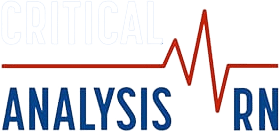Forensic nurse consultants play a crucial role in the investigation of cases involving blunt force trauma. Their expertise bridges the gap between medical knowledge and legal proceedings, providing essential insights that can significantly impact the outcome of a case. This article explores the various steps and methods forensic nurse consultants might use to review evidence in such cases.
Understanding Blunt Force Trauma
Blunt force trauma refers to injuries caused by an object striking or hitting the body with or without penetrating the skin. These injuries can result from various incidents, including physical assaults, accidents, and falls. The severity of blunt force trauma can range from minor bruises to life-threatening internal injuries, making accurate assessment and documentation critical for legal and medical purposes.
Initial Case Review
When a forensic nurse consultant is called to review a case involving blunt force trauma, the initial step is to thoroughly review all available documentation. This includes police reports, medical records, witness statements, and any photographs or videos related to the incident. By examining these materials, the consultant gains a comprehensive understanding of the case background and the context of the injuries.
Physical Examination and Documentation
One of the primary responsibilities of a forensic nurse consultant is to review the detailed physical examination of the injured individual. This examination is meticulously documented, noting the location, size, shape, and characteristics of any injuries.
Forensic nurses look for specific patterns of injuries that may indicate the type of object used, the force applied, and possibly the number of blows. For example, linear bruises might suggest an impact with a rod-like object, while more diffuse bruising could indicate a larger, blunt surface. This information is critical in reconstructing the events leading to the injury and determining whether the injuries are consistent with the account provided.
Collaboration with Other Experts
Forensic nurse consultants often collaborate with other experts, such as forensic pathologists, law enforcement officers, and crime scene investigators. This multidisciplinary approach ensures that all aspects of the case are thoroughly examined and that the evidence is interpreted accurately.
Analyzing Medical Records
Reviewing medical records is a critical component of the forensic nurse consultant’s role. These records provide a timeline of the medical history, treatments received, and any previous injuries that might be relevant to the case. Forensic nurses look for inconsistencies or patterns in the medical records that could indicate underlying issues or repeated trauma.
In cases of blunt force trauma, medical records can reveal information about the progression of injuries, responses to treatment, and any complications that arose. This information helps forensic nurses assess the severity of the trauma and its potential long-term effects.
Photographic Evidence
Photographic evidence is invaluable in cases involving blunt force trauma. Forensic nurse consultants review and interpret photographs of the injuries taken at different stages, including immediately after the incident and during the healing process. These photographs help document the extent and progression of injuries, providing a visual record that can be used in court.
Forensic nurses are trained to identify specific injury patterns and correlate them with possible mechanisms of injury.
Testimony in Court
Forensic nurse consultants often provide expert testimony in court, explaining their findings and the significance of the evidence to the judge and jury. Their testimony is based on their thorough review of the case, possible physical examination of the individual, years of medical trauma experience, and their analysis of medical records and photographic evidence.
When testifying, forensic nurses use clear, non-technical language to ensure that their explanations are understandable to individuals without a medical background. They may also use visual aids, such as diagrams or photographs, to illustrate their points. The goal is to provide an objective and accurate interpretation of the evidence, helping the court make informed decisions.
Forensic nurse consultants are essential in reviewing evidence in cases involving blunt force trauma. Through meticulous documentation, collaboration with other experts, and ethical practice, they provide invaluable insights that contribute to the accurate interpretation of evidence. Their work underscores the importance of a multidisciplinary approach in forensic investigations, highlighting the critical role of healthcare professionals in the legal system.
Would you like to discuss your case? Just give me a call at (432) 661-3639 or email me today!
